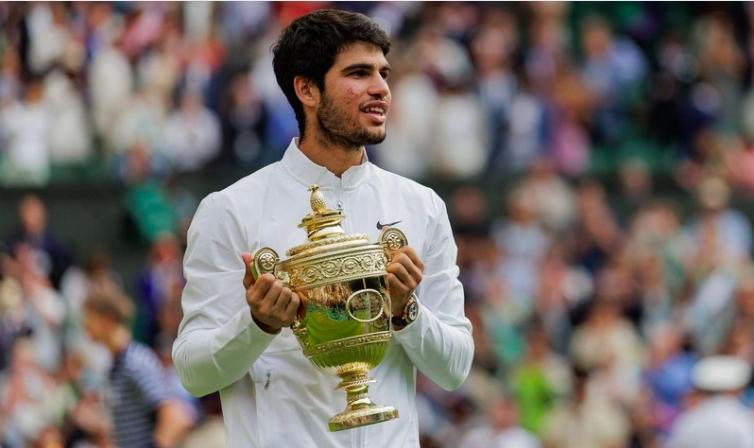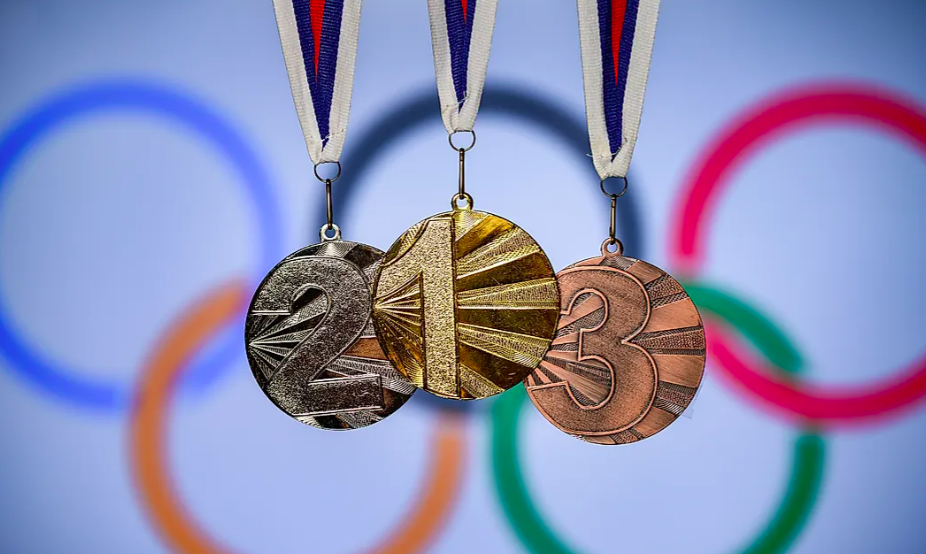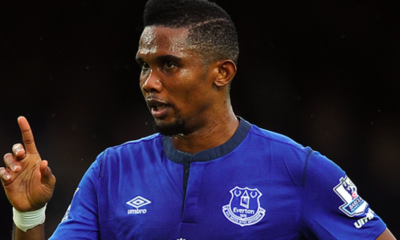Game
The Ultimate Guide to General Multi-Sport Events

The Ultimate Guide to General Multi-Sport Events
When it comes to celebrating athletic prowess, few spectacles can compare to general multi-sport events. These grand occasions bring together athletes from various disciplines, showcasing the breadth of human capability and fostering a spirit of global camaraderie. From the Olympic Games to the Commonwealth Games, these events are not just competitions; they are festivals of culture, unity, and sportsmanship.
A Historical Overview of Multi-Sport Events
Origins of Multi-Sport Competitions
The concept of multi-sport events dates back to ancient times, with the earliest known instance being the Olympic Games in ancient Greece. Established in 776 BC, these games featured a range of sports and were held in honor of Zeus. Fast forward to the modern era, and the revival of the Olympic Games in 1896 by Pierre de Coubertin set the stage for a global tradition of multi-sport events.
Evolution Over the Centuries
Over the years, multi-sport events have evolved, expanding in scale and inclusivity. The early 20th century saw the introduction of events like the Commonwealth Games and the Asian Games, each bringing unique regional flavors to the international sports arena. These events have grown to include a diverse range of sports, catering to various athletic disciplines and showcasing the talents of athletes from all corners of the globe.
Major Multi-Sport Events
The Olympic Games
The Olympic Games are the pinnacle of multi-sport events, featuring summer and winter editions held every four years. They bring together thousands of athletes from over 200 nations, competing in a wide array of sports.
- Summer Olympics: Held every four years, featuring sports like athletics, swimming, gymnastics, and more.
- Winter Olympics: Also held every four years, focusing on winter sports such as skiing, ice hockey, and figure skating.
The Commonwealth Games
The Commonwealth Games are a multi-sport event held every four years, involving athletes from the Commonwealth of Nations. This event celebrates cultural diversity and sportsmanship across former territories of the British Empire.
- Distinctive Features: Includes sports like lawn bowls, netball, and rugby sevens, which are popular within the Commonwealth countries.
The Asian Games
The Asian Games are the largest multi-sport event in Asia, organized by the Olympic Council of Asia. They occur every four years, featuring a wide range of sports including traditional and regional games.
- Unique Aspects: Features sports like sepak takraw and kabaddi, which are indigenous to Asia.
The Pan American Games
The Pan American Games gather athletes from the Americas every four years to compete in a variety of sports. These games serve as a precursor to the Olympic Games for athletes in the Western Hemisphere.
- Sports Lineup: Includes sports like baseball, basketball, and athletics, mirroring the Olympic format.
The African Games
The African Games, also known as the All-Africa Games, are a continental multi-sport event held every four years. They aim to promote unity and athletic excellence across African nations.
- Sports Included: Athletics, boxing, judo, and more, reflecting the rich sporting traditions of Africa.
Key Components of Multi-Sport Events
Opening and Closing Ceremonies
The opening and closing ceremonies are grand spectacles that set the tone for the games. They feature cultural performances, the parade of nations, and the lighting of the Olympic flame, symbolizing peace and unity.
Athlete Villages
Athlete villages are specially designed accommodations that provide housing, dining, and recreational facilities for the athletes. These villages foster a sense of community and camaraderie among participants.
Medal Ceremonies
Medal ceremonies are the culmination of the athletes’ efforts, where winners are awarded gold, silver, and bronze medals. These ceremonies are emotional and celebratory, often accompanied by the playing of the national anthems.
Significance of Multi-Sport Events
Promoting Global Unity
Multi-sport events play a crucial role in promoting global unity and understanding. They bring together athletes and spectators from diverse backgrounds, fostering a spirit of camaraderie and mutual respect.
Showcasing Athletic Excellence
These events provide a platform for athletes to showcase their skills and achieve their personal bests. They highlight the pinnacle of human performance and inspire future generations to pursue excellence in sports.
Economic and Cultural Impact
Hosting multi-sport events can have significant economic and cultural impacts on the host cities. They boost tourism, create jobs, and promote cultural exchange, leaving a lasting legacy.
Challenges and Controversies
Doping Scandals
One of the major challenges facing multi-sport events is the issue of doping. The use of performance-enhancing drugs undermines the integrity of the competition and poses health risks to athletes.
Political Issues
Political tensions can also affect multi-sport events, with instances of boycotts and protests. These issues can overshadow the sporting achievements and disrupt the spirit of the games.
Logistical Challenges
Organizing such large-scale events involves significant logistical challenges, including ensuring the safety and security of participants, managing the venues, and coordinating transportation and accommodation.
Future of Multi-Sport Events
Technological Advancements
The future of multi-sport events will be shaped by technological advancements. Innovations like virtual reality, augmented reality, and advanced data analytics will enhance the spectator experience and improve the performance of athletes.
Sustainability Initiatives
Sustainability is becoming a key focus for future multi-sport events. Host cities are increasingly adopting eco-friendly practices to reduce the environmental impact of the games, such as using renewable energy sources and promoting waste reduction.
Inclusivity and Diversity
There is a growing emphasis on inclusivity and diversity in multi-sport events. Efforts are being made to ensure equal opportunities for athletes of all genders, abilities, and backgrounds, promoting a more inclusive and representative sporting environment.
Conclusion
General multi-sport events are a celebration of athletic excellence, cultural diversity, and global unity. From the historic Olympic Games to the vibrant Commonwealth Games and beyond, these events bring together the best athletes from around the world, creating unforgettable moments and inspiring future generations.
As we look to the future, technological advancements, sustainability initiatives, and a commitment to inclusivity will shape the evolution of multi-sport events, ensuring they continue to captivate and inspire audiences worldwide.
Frequently Asked Questions (FAQs)
What are the major differences between the Summer and Winter Olympics?
The primary difference between the Summer and Winter Olympics lies in the sports contested. The Summer Olympics feature sports like athletics, swimming, and gymnastics, while the Winter Olympics focus on winter sports such as skiing, ice hockey, and figure skating. Additionally, the weather conditions and the types of venues used for these events differ significantly.
How do host cities benefit from organizing multi-sport events?
Host cities benefit from organizing multi-sport events in several ways. These benefits include increased tourism, job creation, and infrastructure development. The events also promote cultural exchange and can leave a lasting legacy in the form of improved sports facilities and enhanced global recognition.
What measures are taken to combat doping in multi-sport events?
To combat doping, multi-sport events implement strict anti-doping measures. These include rigorous drug testing before and during the competition, the use of advanced detection methods, and severe penalties for athletes found guilty of using performance-enhancing drugs. Organizations like the World Anti-Doping Agency (WADA) play a crucial role in enforcing these measures.
How are sports selected for inclusion in multi-sport events?
Sports are selected for inclusion in multi-sport events based on factors such as global popularity, historical significance, and the ability to provide fair and exciting competition. Governing bodies like the International Olympic Committee (IOC) periodically review and update the list of sports, considering emerging trends and feedback from athletes and fans.
What role do volunteers play in multi-sport events?
Volunteers play a vital role in the success of multi-sport events. They assist with various tasks, including event management, athlete support, logistics, and spectator services. Volunteers help create a welcoming and efficient environment, ensuring the smooth operation of the games and enhancing the overall experience for athletes and spectators alike.
Game
The Essence of Sportsmanship and Fair Play Awards: A Comprehensive Guide

The Essence of Sportsmanship and Fair Play Awards: A Comprehensive Guide
In the world of sports, sportsmanship and fair play are the cornerstones of competition. These principles not only define how games are played but also reflect the integrity and character of the athletes and teams involved.
From local community leagues to international arenas, the importance of maintaining respect, fairness, and ethical behavior cannot be overstated. This comprehensive guide explores the multifaceted nature of sportsmanship and fair play, delving into its history, significance, and impact on various sports.
Understanding Sportsmanship
Defining Sportsmanship
Sportsmanship encompasses the attitudes and behaviors of players, coaches, and fans in sports. It involves:
- Respect for Opponents: Acknowledging the skills and efforts of opponents without hostility or bitterness.
- Graciousness in Winning and Losing: Celebrating victories humbly and accepting defeats gracefully.
- Fair Play: Adhering to the rules and spirit of the game, avoiding cheating or unsporting conduct.
Historical Context of Sportsmanship
The concept of sportsmanship dates back to ancient civilizations where sports were often part of religious or cultural ceremonies. In ancient Greece, the Olympic Games were as much about celebrating human excellence as they were about worshiping the gods. The term “fair play” gained prominence during the 19th century with the rise of organized sports in Britain, emphasizing the importance of ethical conduct in competition.
The Principles of Fair Play
Fair Play in Different Sports
While the core idea of fair play remains consistent, its application can vary across different sports:
- Soccer: Players are expected to respect the referee’s decisions, avoid diving or feigning injury, and demonstrate good sportsmanship.
- Tennis: Acknowledging an opponent’s good shot, calling faults accurately, and maintaining a respectful demeanor are crucial.
- Basketball: Players should refrain from trash-talking, respect fouls, and exhibit teamwork and discipline.
Fair Play Codes and Regulations
Various sports organizations and governing bodies have established codes of conduct to promote fair play:
- The Olympic Charter: Emphasizes the importance of fair play and ethical behavior among athletes.
- FIFA’s Fair Play Code: Promotes respect, integrity, and good sportsmanship in soccer.
- NBA’s Code of Conduct: Outlines acceptable behavior for players, coaches, and spectators to ensure fair play and respect.
The Role of Coaches and Parents
Coaches as Role Models
Coaches play a pivotal role in instilling sportsmanship and fair play in athletes. Effective coaches:
- Lead by Example: Demonstrate respect and integrity in their actions and decisions.
- Encourage Positive Behavior: Reward fair play and discourage unsporting conduct.
- Provide Guidance: Educate athletes on the importance of ethical behavior in sports.
Parents’ Influence on Young Athletes
Parents also significantly impact their children’s attitudes towards sportsmanship:
- Model Respectful Behavior: Show respect for coaches, officials, and other players.
- Support Positive Play: Encourage children to play fairly and respect opponents.
- Focus on Effort and Improvement: Emphasize personal growth and effort over winning.
Impact of Sportsmanship on Team Dynamics
Building Team Cohesion
Teams that prioritize sportsmanship often experience stronger cohesion and camaraderie:
- Mutual Respect: Players respect each other’s contributions and work towards common goals.
- Effective Communication: Honest and respectful communication fosters a positive team environment.
- Trust and Support: Team members support each other, leading to improved performance and morale.
Conflict Resolution
Promoting sportsmanship helps in resolving conflicts within teams:
- Open Dialogue: Encourages players to discuss issues openly and respectfully.
- Problem-Solving: Teams work together to find fair and effective solutions to disputes.
- Maintaining Harmony: Reduces the likelihood of conflicts escalating into larger issues.
The Significance of Fair Play Awards
Recognizing Ethical Conduct
Fair play awards celebrate athletes and teams who exemplify outstanding sportsmanship:
- FIFA Fair Play Award: Honors teams or individuals who have shown exemplary sportsmanship in soccer.
- Pierre de Coubertin Medal: Awarded by the International Olympic Committee for outstanding fair play and sportsmanship.
Inspiring Future Generations
These awards inspire young athletes to value sportsmanship:
- Role Models: Award recipients serve as role models, demonstrating the importance of ethical behavior.
- Promotion of Values: Reinforces the values of respect, integrity, and fair play in sports.
Case Studies of Exemplary Sportsmanship
Olympic Moments of Fair Play
The Olympic Games have witnessed numerous acts of sportsmanship:
- Jesse Owens and Luz Long: During the 1936 Berlin Olympics, German long jumper Luz Long helped his competitor, Jesse Owens, to secure the gold medal, demonstrating remarkable sportsmanship amidst political tensions.
- Lawrence Lemieux: In the 1988 Seoul Olympics, Canadian sailor Lawrence Lemieux abandoned his race to rescue fellow competitors in distress, sacrificing his chance at a medal for the safety of others.
Modern Examples in Professional Sports
Modern professional sports continue to showcase acts of fair play:
- Paolo Di Canio: In a 2000 Premier League match, Di Canio caught the ball to stop play and allow an injured goalkeeper to receive treatment, foregoing a scoring opportunity.
- Andy Murray: Known for his respectful demeanor on and off the court, Murray often praises his opponents and acknowledges their efforts, embodying the spirit of sportsmanship.
Challenges to Sportsmanship and Fair Play
Doping and Cheating
Doping and cheating undermine the integrity of sports:
- Health Risks: Doping poses severe health risks to athletes.
- Unfair Advantage: Cheating disrupts the level playing field, creating unfair competition.
Unsportsmanlike Behavior
Instances of unsportsmanlike behavior can tarnish the reputation of sports:
- Trash Talking: Disrespectful and hostile language can lead to conflicts and altercations.
- Aggressive Conduct: Physical aggression beyond the accepted limits of the sport can cause injuries and disputes.
Promoting Sportsmanship in Youth Sports
Educational Programs
Educational programs play a crucial role in promoting sportsmanship among young athletes:
- Workshops and Seminars: Educate young athletes on the importance of fair play and ethical behavior.
- Mentorship Programs: Pair young athletes with experienced mentors who exemplify sportsmanship.
Community Initiatives
Community initiatives can foster a culture of sportsmanship:
- Sportsmanship Awards: Local leagues and schools can establish awards to recognize and reward fair play.
- Awareness Campaigns: Promote the values of sportsmanship through campaigns and events.
Technological Advancements and Fair Play
Video Assistant Referee (VAR)
The introduction of VAR in sports like soccer aims to ensure fair play by reviewing controversial decisions. VAR has:
- Reduced Errors: Helped correct officiating mistakes.
- Enhanced Fairness: Ensured fair outcomes by reviewing incidents in real-time.
Wearable Technology
Wearable technology monitors athletes’ performance and adherence to rules:
- Tracking Devices: Ensure athletes follow the rules by tracking their movements and actions.
- Fair Competition: Maintains fairness by providing accurate data on performance and compliance.
Future of Sportsmanship and Fair Play
Evolving Ethical Standards
The future of sportsmanship will involve evolving ethical standards to keep pace with changes in society and sports:
- Inclusivity and Diversity: Promoting inclusivity and respect for diversity in sports.
- Ethical Leadership: Encouraging leaders and role models to advocate for fair play and sportsmanship.
Global Initiatives
Global initiatives will continue to promote sportsmanship on a larger scale:
- International Campaigns: Organizations like the IOC and FIFA will lead campaigns to promote sportsmanship globally.
- Collaboration: Increased collaboration between countries and organizations to uphold the values of fair play.
Conclusion
Sportsmanship and fair play are integral to the spirit of sports, transcending mere competition to embody respect, integrity, and ethical behavior. From the grassroots level to the grand stages of international events, promoting these values is essential for the growth and sustainability of sports. As we celebrate acts of sportsmanship and strive to overcome challenges, the future of sports will be brighter, fairer, and more inclusive. Let us champion sportsmanship and fair play, ensuring that the essence of sports remains pure and inspiring for generations to come.
Frequently Asked Questions (FAQs)
Why is sportsmanship important in sports?
Sportsmanship is important because it promotes respect, fairness, and integrity in sports. It ensures that competitions are conducted in a fair and ethical manner, fostering a positive environment for athletes, coaches, and spectators.
How can coaches promote sportsmanship?
Coaches can promote sportsmanship by leading by example, encouraging positive behavior, providing guidance on ethical conduct, and rewarding acts of sportsmanship. They play a crucial role in shaping the attitudes and behaviors of their athletes.
What are some famous examples of sportsmanship?
Famous examples of sportsmanship include Jesse Owens and Luz Long’s friendship during the 1936 Olympics, Paolo Di Canio’s fair play gesture in a Premier League match, and Lawrence Lemieux’s heroic act during the 1988 Seoul Olympics.
How does technology impact fair play in sports?
Technology impacts fair play by reducing errors and enhancing fairness. Innovations like the Video Assistant Referee (VAR) and wearable technology help ensure accurate decision-making and compliance with rules, maintaining a level playing field.
What initiatives exist to promote sportsmanship and fair play globally?
Several global initiatives promote sportsmanship and fair play, including:
- The Olympic Charter: The International Olympic Committee (IOC) emphasizes fair play and ethical behavior in its charter, encouraging athletes worldwide to uphold these values.
- FIFA Fair Play Campaign: FIFA promotes fair play through various campaigns, awards, and educational programs aimed at players, coaches, and fans.
- UNESCO’s International Charter of Physical Education, Physical Activity, and Sport: This charter outlines principles to ensure that sports and physical activities are conducted in a fair and inclusive manner.
- World Anti-Doping Agency (WADA): WADA works globally to combat doping in sports, ensuring a level playing field and promoting clean competition.
- International Fair Play Committee (CIFP): This organization recognizes and rewards acts of sportsmanship and fair play through awards and educational initiatives.
These initiatives help foster a global culture of respect, integrity, and ethical behavior in sports, ensuring that the spirit of fair play is upheld across all levels of competition.
Game
The Complete Guide to Olympic Awards: Celebrating Excellence on the Global Stage

The Complete Guide to Olympic Awards: Celebrating Excellence on the Global Stage
The Olympic Games are the pinnacle of athletic competition, bringing together the best athletes from around the world to compete for glory and honor. The Olympic Awards are the ultimate recognition of an athlete’s dedication, skill, and perseverance. These awards celebrate not only the winners but also the spirit of sportsmanship and the pursuit of excellence that define the Olympic movement.
A Brief History of the Olympic Awards
The tradition of awarding medals at the Olympics dates back to the inaugural modern Olympic Games held in Athens in 1896. Initially, winners received silver medals, with copper medals awarded to second-place finishers. Gold medals were introduced at the 1904 St. Louis Games, and the now-familiar gold, silver, and bronze medals became standard at the 1908 London Games.
Evolution of the Medals
Over the years, the design and presentation of Olympic medals have evolved. Each host city puts its unique stamp on the medals, incorporating local culture and artistic elements. Despite these changes, the core values of the Olympics—excellence, friendship, and respect—remain central to the awards.
The Types of Olympic Awards
1. Olympic Medals
The most coveted awards at the Olympic Games are the gold, silver, and bronze medals, awarded to the top three finishers in each event. These medals represent the highest level of achievement in sports and are symbols of an athlete’s hard work and dedication.
Gold Medal
Awarded to the first-place finisher, the gold medal is a universal symbol of victory and excellence. It is made primarily of silver and coated with at least six grams of pure gold.
Silver Medal
The silver medal is awarded to the second-place finisher. It is made entirely of pure silver, signifying high achievement and success in competition.
Bronze Medal
Awarded to the third-place finisher, the bronze medal is made of a copper alloy. It represents the athlete’s outstanding performance and determination.
2. Diplomas and Certificates
In addition to medals, athletes who finish in the top eight of their events receive official Olympic diplomas and certificates. These awards acknowledge their exceptional performance and place them among the world’s best.
3. Special Awards
Certain Olympics also feature special awards to honor athletes and teams that demonstrate extraordinary sportsmanship, courage, and perseverance. Examples include the Pierre de Coubertin Medal and the Fair Play Award.
Significance of Olympic Awards
Symbol of Achievement
Olympic medals are more than just pieces of metal; they are symbols of an athlete’s journey, sacrifices, and triumphs. Winning an Olympic medal is a dream come true for many athletes, marking the pinnacle of their careers.
Inspiration and Legacy
Olympic awards inspire future generations of athletes to pursue their dreams and strive for excellence. The stories of Olympic medalists serve as powerful reminders of what can be achieved through hard work, determination, and perseverance.
National Pride
Winning an Olympic medal brings immense pride to the athlete’s home country. It fosters a sense of unity and national pride, as citizens celebrate the success of their representatives on the world stage.
The Process of Winning Olympic Medals
Qualification and Preparation
Athletes undergo rigorous qualification processes to earn a spot in the Olympics. This often involves competing in international events, achieving qualifying standards, and earning points in ranking systems. Once qualified, athletes dedicate years of training and preparation to reach peak performance levels.
Competition and Performance
During the Olympics, athletes compete in a series of events, striving to achieve their personal bests and outperform their rivals. The pressure and intensity of Olympic competition bring out the best in athletes, resulting in memorable performances and records.
Victory Ceremonies
Victory ceremonies are a highlight of the Olympics, where medalists are honored on the podium. The playing of the national anthem for gold medalists and the raising of the national flags create emotional and unforgettable moments.
Famous Olympic Medalists and Their Achievements
Michael Phelps
Michael Phelps is the most decorated Olympian of all time, with 23 gold, 3 silver, and 2 bronze medals in swimming. His dominance in the pool has set numerous world records and inspired countless swimmers worldwide.
Usain Bolt
Usain Bolt, the fastest man on earth, has won 8 Olympic gold medals in sprinting. His electrifying performances and charismatic personality have made him a global icon.
Simone Biles
Simone Biles, a gymnastics sensation, has won 7 Olympic medals, including 4 golds. Her incredible skills and routines have revolutionized the sport and earned her a place among the greatest gymnasts in history.
Larisa Latynina
Larisa Latynina, a legendary gymnast from the Soviet Union, won 18 Olympic medals, including 9 golds. Her record for the most Olympic medals held for nearly half a century.
Unique and Memorable Olympic Medals
Sydney 2000 Medals
The Sydney 2000 medals featured a unique design incorporating the Olympic rings and the Sydney Opera House. The medals were crafted using materials sourced from Australia, adding a local touch to the awards.
Beijing 2008 Medals
The Beijing 2008 medals were distinct for their use of jade, a traditional Chinese material. The incorporation of jade symbolized nobility and virtue, reflecting China’s rich cultural heritage.
Tokyo 2020 Medals
The Tokyo 2020 medals were made from recycled electronics, including mobile phones and small electronic devices. This eco-friendly initiative highlighted the importance of sustainability and environmental consciousness.
The Future of Olympic Awards
Innovation in Design
Future Olympic medals are likely to see further innovation in design, incorporating advanced materials and technologies. Host cities will continue to infuse their unique cultural elements into the medals, creating lasting symbols of the Games.
Sustainability and Environmental Impact
Sustainability will play a significant role in the production of future Olympic medals. The use of recycled materials and eco-friendly manufacturing processes will be emphasized to reduce the environmental impact of the Games.
Digital and Virtual Awards
As technology advances, we may see the introduction of digital and virtual awards. These could include virtual reality experiences, digital certificates, and blockchain-based verification of achievements.
Conclusion
The Olympic Awards are the ultimate celebration of athletic excellence and the human spirit. They honor the dedication, skill, and perseverance of athletes who compete on the world’s grandest stage. From the iconic gold, silver, and bronze medals to special awards recognizing sportsmanship and courage, these accolades inspire future generations and foster a sense of global unity and pride.
As we look to the future, the Olympic Awards will continue to evolve, reflecting advancements in technology and a commitment to sustainability. Yet, their core purpose will remain unchanged: to celebrate the extraordinary achievements of athletes who push the boundaries of what is possible and embody the Olympic ideals of excellence, friendship, and respect.
Frequently Asked Questions (FAQs)
How are Olympic medal designs chosen?
The design of Olympic medals is chosen through a collaborative process involving the host city’s organizing committee, artists, and designers. The designs often reflect the culture and heritage of the host nation and incorporate elements of the Olympic spirit. Competitions are sometimes held to select the winning design, ensuring a unique and meaningful representation for each edition of the Games.
What are the criteria for awarding the Pierre de Coubertin Medal?
The Pierre de Coubertin Medal, also known as the Olympic Spirit Award, is awarded by the International Olympic Committee (IOC) to athletes, officials, or volunteers who demonstrate exceptional sportsmanship, fair play, and dedication to the Olympic ideals. Recipients of this prestigious award often display acts of selflessness, integrity, and respect, embodying the true spirit of the Olympics.
Can an athlete win multiple medals in a single Olympic Games?
Yes, athletes can win multiple medals in a single Olympic Games if they compete in and excel at multiple events. For example, swimmers and gymnasts often have the opportunity to participate in several events, allowing them to accumulate multiple medals. Michael Phelps, for instance, won 8 gold medals in swimming at the 2008 Beijing Olympics, setting a record for the most gold medals won by an individual in a single Games.
How do countries rank in the Olympic medal table?
Countries are ranked in the Olympic medal table based on the number of medals their athletes win. The primary ranking criterion is the number of gold medals, followed by the number of silver and bronze medals. If countries have the same number of gold medals, the total number of silver medals is considered, and if still tied, the total number of bronze medals determines the ranking. This system highlights the achievements of athletes and the overall performance of nations in the Games.
What is the significance of the Olympic victory ceremony?
The Olympic victory ceremony is a symbolic and celebratory event where medalists are honored for their achievements. During the ceremony, the gold, silver, and bronze medalists stand on the podium while their national flags are raised. The national anthem of the gold medalist’s country is played, creating a moment of pride and emotion. The ceremony not only recognizes the athletes’ hard work and success but also promotes international unity and respect among nations.
-

 NBA5 months ago
NBA5 months agoLaMelo Ball Net Worth: A Comprehensive Look at the NBA Star’s Financial Empire
-

 Football6 months ago
Football6 months agoEuro 2024: Alvaro Morata Speaks Out About ‘No Respect’ in Spain
-

 Football7 months ago
Football7 months agoMeet the World Football Celebrities and Their Stories
-

 Football7 months ago
Football7 months agoSamuel Eto’o: Legendary Cameroonian Soccer Star’s Career
-

 Football6 months ago
Football6 months agoRonaldo’s Business Ventures and Investments (CR7 Brand)
-

 Wrestling3 months ago
Wrestling3 months agoJey Uso Biography and Net Worth: The Rise of a WWE Superstar
-

 Wrestling4 months ago
Wrestling4 months agoKevin Owens: The Prizefighter’s Rise to Fame and Fortune
-

 Football6 months ago
Football6 months agoEuro 2024 Power Rankings: Spain Remains Dominant Ahead of Semifinals




